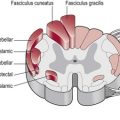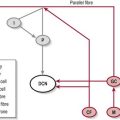Subjective assessment
History of present complaint (HPC)
Date of onset of the signs/symptoms
Example 1 – 1/4/09 Mr X had a left cerebrovascular accident [or CVA], while at home. Initial symptoms were slurred speech and right upper limb weakness which came on gradually. There was no loss of consciousness. Admitted to hospital via the A&E department.
Example 2 – Mr X presented with an exacerbation of lower limb spasticity, associated with MS 3/07/09. Pt referred to outpatient clinic by GP.
Progression of the condition
Example – Mr X was diagnosed with MS 22/11/07. Since this time he has had one exacerbation of his lower limb weakness per year, with no new additional symptoms over this period. On each occasion, a hospital admission was necessary and with medical treatment and physiotherapy he recovered sufficient mobility to return home.
Drug history (DH)
The long-term drug management of some symptoms may also result in secondary problems for the patient. For example, antispasmodic medications that work systemically (baclofen and tizanidine) to reduce hypertonic muscle activity are not discriminatory and therefore also affect other non-hypertonic muscles. The long-term use of these medications to reduce general muscle activity can cause underlying muscle weakness and loss of function separate to the primary condition (Dones et al. 2006).
Social history (SH)
The level of function of the patient
The following will give the therapist some idea of the type of information required:
Personal ADL (PADL)
The therapist needs to investigate both previous and present level of ability for:
Washing
Enquire do they wash in the bathroom or at the bedside?
Dressing
This area needs to be investigated in the same detail.
Mobility
Stairs and steps
Are they independent? Do they use the hand rails? Do they use a walking aid and/or need assistance.
Falls
The National Institute for Clinical Excellence (NICE) guidelines for falls (2004) recommend that older people be asked routinely whether they have fallen in the past year and the frequency, context and characteristics of the fall(s). When the individual reports recurrent falls within the year, the NICE guidance is that they should be offered a multifactorial falls risk assessment (S3.34).
Environment
Do they live in a house, bungalow, flat, caravan?
Ask about the general layout of their home? Is there a bathroom downstairs?
Psychosocial
Personal factors
Life style
Occupation: Is the patient retired, employed or self-employed? What does the job entail? Ask for detail if it is not something obvious. This will be useful in setting appropriate goals and can be used as part of treatment.
Hobbies, recreational activities and sport: Question as for occupation.
Education: Does the patient attend school, further or higher education, or are they an adult learner?
Support
Questioning should incorporate:
Personal support: Who is local and supportive of the patient’s needs – family, friends, colleagues or dependants? What commitments and pressures do these people have? What perceptions and expectations do these individuals have? Their attitudes may facilitate or limit the patient’s progress.
Finances: Is the patient financially independent/dependent? Are they receiving any sort of benefit (Disability Living Allowance, Employment/Pensions/Housing benefit)?
Planning the objective assessment
• Which information is clinically relevant and which is not
• Which functions are difficult for the patient and whether there are any common factors influencing them all. These functions then need to be broken down to analyse the likely joint movements, muscle actions and motor control aspects. From this basic knowledge, the therapist can begin to reason the potential causes of the patient’s difficulties based on the presenting pathology.





